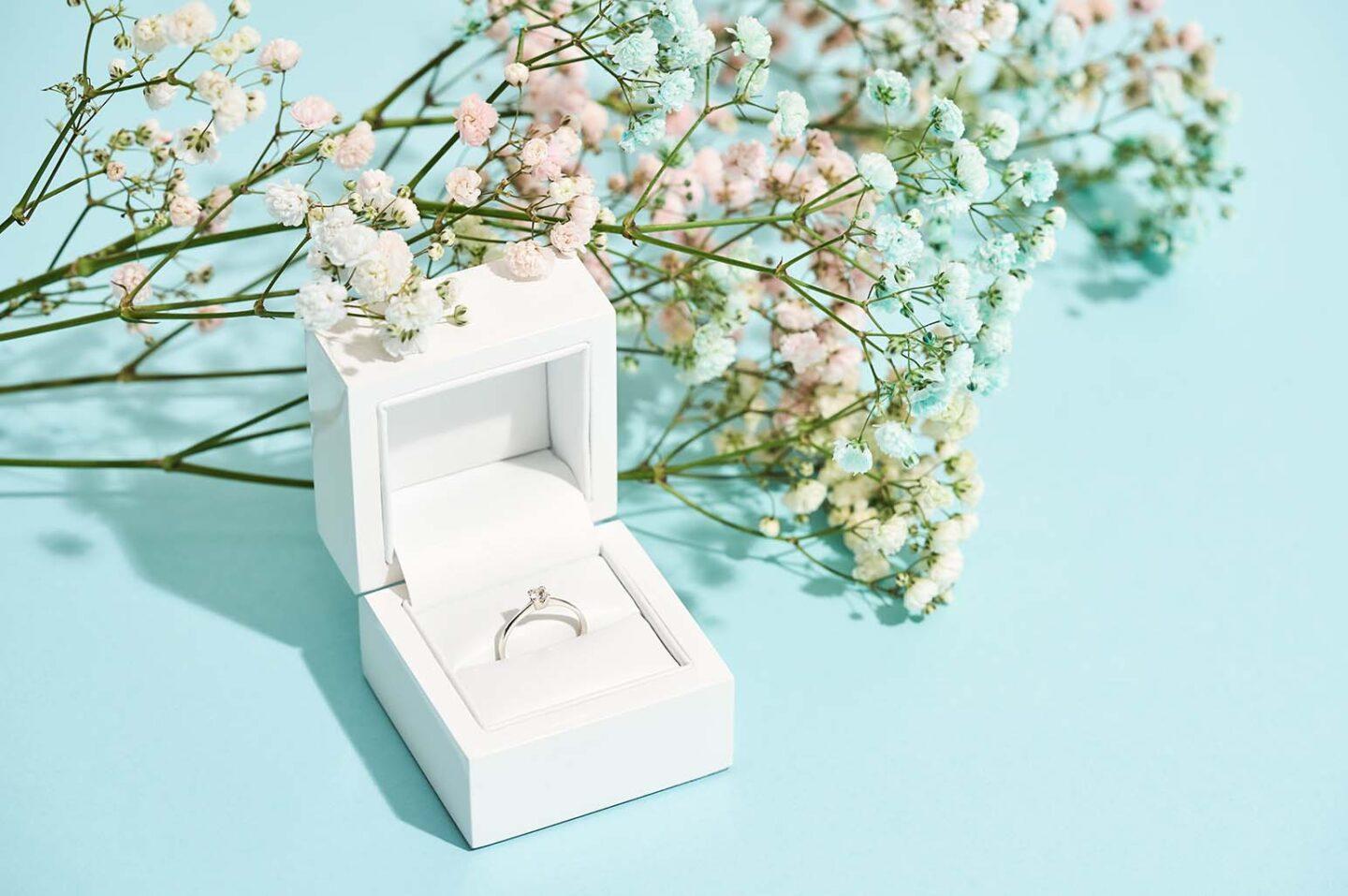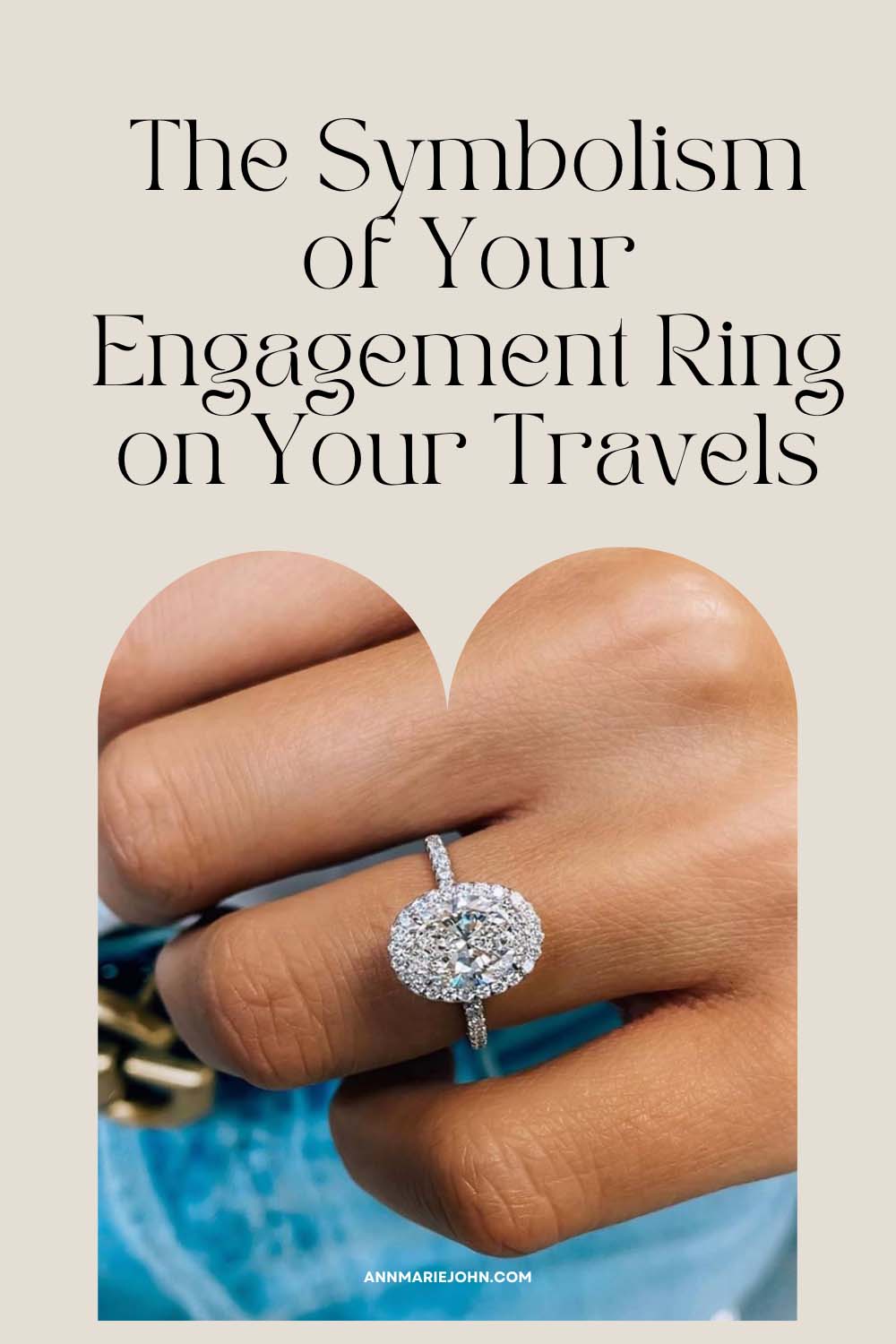Your engagement ring is not only a beautiful piece of jewelry. It also symbolizes love, commitment, and a lifetime of adventures together. It is often one of the most treasured and sentimental pieces of jewelry a person owns.

As you plan your journey to forever, your ring becomes a cherished companion. But when travel plans arise, the question arises of whether to take the precious ring along on the adventures. Join us as we explore the stories and sentiments that make your ring an integral part of your travels.

The Emotional Weight of Leaving the Ring Behind
For many couples, the thought of parting with the engagement ring for a temporary time is hard. The ring represents the hopes and dreams they share for the future. It has a deep emotional connection between the person and what the relationship means.
Some married people choose not to wear a wedding band for various personal reasons. These include metal allergies and a desire for discretion about their marital status. But leaving behind an engagement ring can feel like much more of a sacrifice. The band represents the promise of forever even more than the wedding ring marks the I do. Deciding to keep it safe at home involves carefully weighing the value of preserving this symbol against practical travel concerns. It needs to find a balance between emotions and logic.
The Symbolism of the Engagement Ring in Travel
Though not always physically present, the meaning embodied in the engagement ring remains important even when traveling far from home. It continues to represent the love and commitment between partners.
Some couples actually view travel as the perfect opportunity for meaningful proposals They select destinations with sentimental significance. Specific romantic locales can provide the ideal backdrop. Surprise engagements can add to the delight of exploring a new place together.
Some couples select places to propose partners during their grand international trip. For instance, springtime in Paris or sunsets along the Amalfi Coast. These remarkable settings reflect the magical beginnings of their engagement. Others prefer sentimental simplicity by proposing in childhood hometowns or during revisits to alma maters. These nostalgic places weave personal history into the narrative of their future.
The places where a couple gets engaged gain additional emotional weight and commemoration. Sometimes pairs who get engaged during trips return to these spots to celebrate major anniversaries. Places where engagements happen mark milestones in their shared journey.
Alternative Solutions for Traveling Couples
Some traveling pairs opt for alternative bands. So that they can enjoy the symbol of lifelong commitment without risking their precious original rings. These provide the emblem of their promise while also being practical for globetrotting.
Nowadays, replacements like silicone rings have surged in popularity. These mimic the look of a traditional band but are flexible, waterproof, and ultra-durable. Such travel rings offer security, preventing the loss of an irreplaceable heirloom on the road. They serve as a safe stand-in when the real ring stays home.
Other couples buy inexpensive substitute bands for travel purposes. Though not as sentimentally valuable, these alternatives let them maintain the symbolic meaning of wearing a ring. It let them protect the original.
The Practical Side of Traveling with an Engagement Ring
Attempting to safely travel for extended periods while keeping an engagement ring presents some practical hurdles. Travelers need to consider how to prevent loss, theft, or damage.
Rings need inspection over time to ensure the structural integrity of the band and the security of the stone. But frequent checking becomes impractical on lengthy trips. This often happens when traveling through remote areas. Even careful couples can miss small, loose stones or develop cracks.
While symbols carry emotional resonance, practical challenges can arise when traveling with an engagement ring. Airport security does not allow jewelry. So couples must remove rings and risk forgetting them in the scanning bin. Even when remembered, rings can get scratched or damaged by going through X-ray machines repeatedly. Items left in hotel rooms lack security, so travelers risk losing uninsured valuables.
Securing valuables in hotel rooms abroad also proves challenging. In-room safes, when available, vary in reliability and can still be compromised by professional thieves. Constantly carrying the ring can cause worry about losing it.
The Broader Perspective: Engagement Rings Across Cultures
While emotional resonance and symbolism translate globally, cultural differences emerge in how engagement rings are viewed and worn during travel. Engagement rings hold personal significance in any culture. But the traditions and symbolism vary worldwide. In Egypt, couples exchange gold bands at their engagement ceremony, only adding diamonds later at the wedding.
Some couples forgo rings entirely. In Argentina, brides are gifted dazzling pairs of pearl earrings for their engagement. Those wishing for rings must provide them personally to the groom. The diversity of these traditions reminds us that the depth of meaning ring-bearers attach to this symbol remains its most universal attribute.
In China’s tradition, engagement rings are simple bands with no stones. The wedding ring holds greater significance. Chinese newlyweds often leave engagement rings at home and travel with just their wedding bands.
In India, elaborate engagement rings indicate family status and wealth. Indians tend to travel with these rings, which have deep cultural importance.
In Islamic cultures, women don’t wear rings during everyday activities. Engagement rings mainly signify a formal betrothal agreement. For travel, especially religious pilgrimages, rings are often left behind. Despite cultural variations, the universal language of love and lifetime commitment rings true. The engagement band symbolizes a couple’s journey, wherever in the world it may take them.
Frequently Asked Questions
Q: Why do some travelers opt for fake or plastic wedding rings?
A: To avoid drawing unnecessary attention and for safety reasons, some travelers substitute fake rings. For single female travelers, bands can deter unwanted suitors.
Q: How do travelers manage the emotional challenge of leaving their rings behind?
A: Many find other ways to symbolize commitment, like carrying their beloved’s picture. Some have new inexpensive rings made just for travel. Upon returning, they wear the original again.
Q: Are there insurance policies covering engagement rings during extended travels?
A: While some insurers cover theft or damage, frequent inspections are often needed. It makes claims difficult on lengthy trips. Most suggest leaving rings securely at home when traveling overseas or to high-risk areas.
Conclusion
A journey of true love and lifetime commitment is not defined by a physical piece of jewelry. The experiences and memories created, whether the ring is worn close to your heart or resting safely at home, only enhance the meaningful symbolism it represents.
The engagement ring’s absence simply allows the intangible bond between partners to shine. It serves as a reminder during travel that some things are not defined by tangible possessions. It is strengthened by the promises we make and keep in our hearts. It is a witness to the milestones of your life with your partner.
